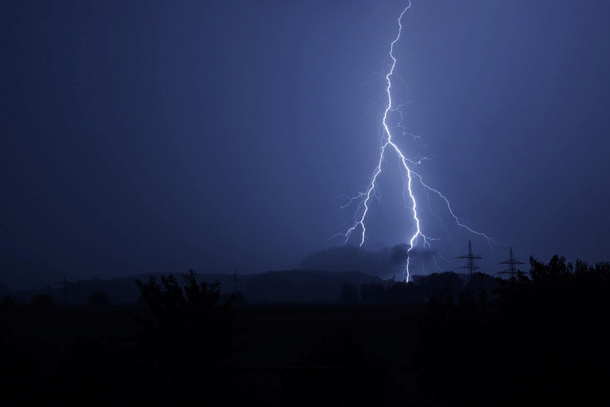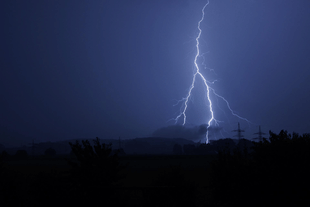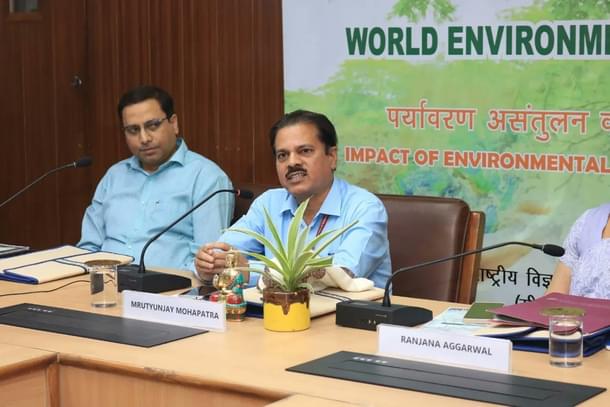Science
Targeting Small-Scale Weather Events Is A Priority: IMD DG Mrutyunjay Mohapatra At CSIR-NIScPR
Karan Kamble
Jun 13, 2022, 02:05 PM | Updated 01:48 PM IST
Save & read from anywhere!
Bookmark stories for easy access on any device or the Swarajya app.


Climate change is causing an increase in frequency of extreme weather events. While India’s forecasting and early warning system are excellent at predicting large-scale extreme weather, small-scale weather events like thunderstorms and lightning are posing a challenge.
The Director General (DG) of Meteorology at the India Meteorological Department (IMD), Dr Mrutyunjay Mohapatra, shared this on the occasion of World Environment Day (WED) at the Council of Scientific and Industrial Research-National Institute of Science Communication and Policy Research (CSIR-NIScPR).
Delivering the WED lecture on 6 June, Dr Mohapatra said, “small-scale extreme weather events like thunderstorms, lightning are increasing.” He said that while the number of deaths due to cyclones has reduced significantly, the number of deaths due to lightning has been on the rise. “Every year about 3,000 people die because of lightning.”
Small-scale weather events are, therefore, firmly on the meteorology radar. “The priority is now that not only the large-scale weather systems, but also small-scale weather systems should be targeted,” Dr Mohapatra said.
As for India’s early warning system in general, “India is second to none,” the IMD DG stated.
Dr Mohapatra is affectionately known as the “cyclone man of India” for his cyclone forecasting and early warning prowess, which is said to have helped minimise loss of life during many a cyclone. He leads the cyclone warning division of the IMD.
In his 6 June lecture, he provided a timely, necessary reminder that we, the human beings, are also part of the environment even if it doesn’t seem that way. "When you say environment, certainly we feel that we are not part of it. It is something which is surrounding all of us. But we are also a part of the environment,” he said.
He explained that while comfort has increased on an individual level over the decades, the environment has degraded. “The comfort is not sustainable. It is becoming threatened by the changes in environment,” he said.

The average global temperature on Earth has increased by over 1.1 degrees Celsius since the late 1800s, with the majority of the warming occurring over the last four to five decades. Though there are natural factors influencing this change, it is recognised that human activities have been largely responsible.
Hence, there is the addition of the “anthrosphere,” which is associated with human activity modifying the environment, over and above the four major spheres of the natural environment — lithosphere, atmosphere, hydrosphere and biosphere.
In case of temperature rise, there are three implications, explained Dr Mohapatra — a shift in mean temperature, which in turn leads to lesser cold wave conditions, and a rise in heat wave conditions. But it’s not that simple; even variability of weather increases.
"What you find actually, (in) major parts of the country, there is a rising trend in the heat wave conditions. Further, even in peninsular India, where we do not usually get heat wave conditions, in the recent years what you find (is) that the trend is increasing,” Dr Mohapatra said, referring to the period from 1961 to 2021.
The year 2022 continued the trend and reflected the implications pointed out by Dr Mohapatra. Temperatures in India during the month of March were the highest of any March since record-keeping began over 120 years ago (1901-2022). Meanwhile, April of 2022 was the third-hottest April during this period.
Heat wave warnings:
— India Meteorological Department (@Indiametdept) May 14, 2022
ï¼Heat Wave conditions in most parts with severe heat wave conditions in many parts very likely over West Rajasthan on 14th; heat wave conditions in many parts with severe heat wave conditions in isolated pockets over the same region on 15th May. pic.twitter.com/eBzc82XUF3
On 5 May, Prime Minister Narendra Modi chaired a meeting to review heat wave management and monsoon preparedness in the country. States and Union territories were advised to prepare heat action plans and flood preparedness plans in response.
To strengthen efforts against climate change, Modi launched a global initiative called “Lifestyle for the Environment — LiFE Movement” on 5 June.
The LiFE movement’s goal is to drive collective action through climate-friendly actions taken by individuals around the world. It will hopefully lead to a wide ecosystem of people that promotes and enables environmentally friendly lifestyles.





